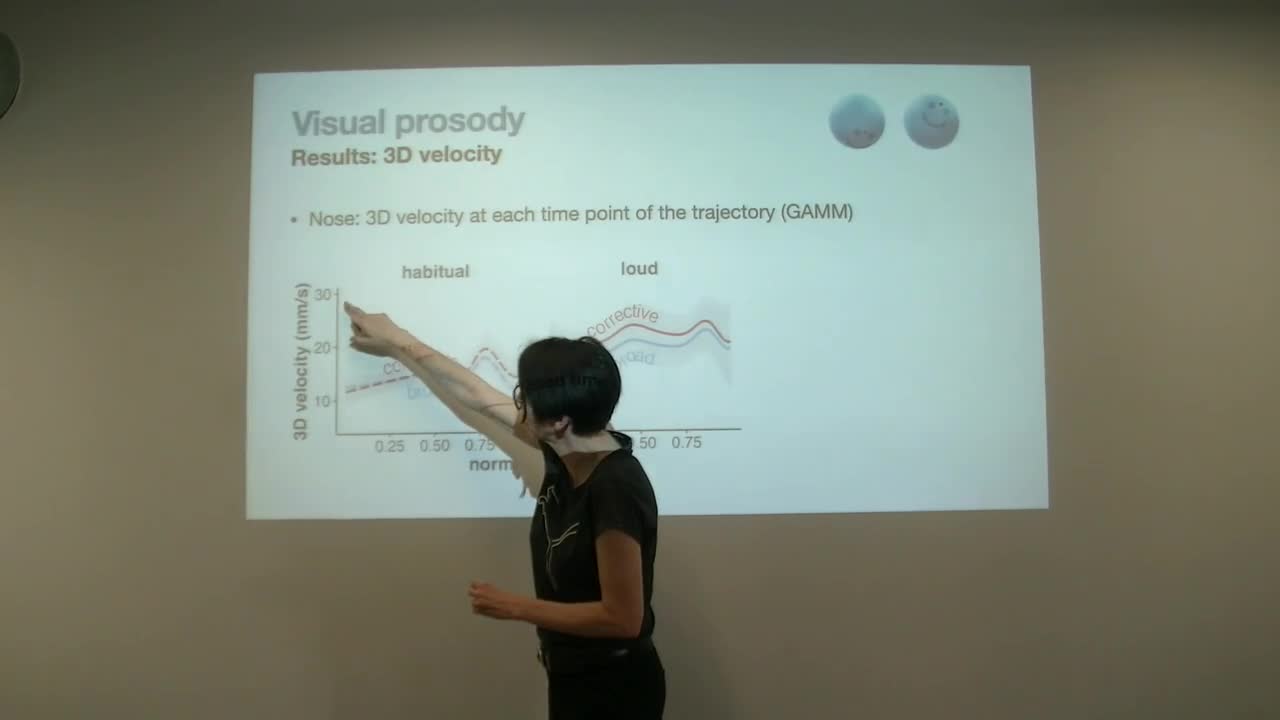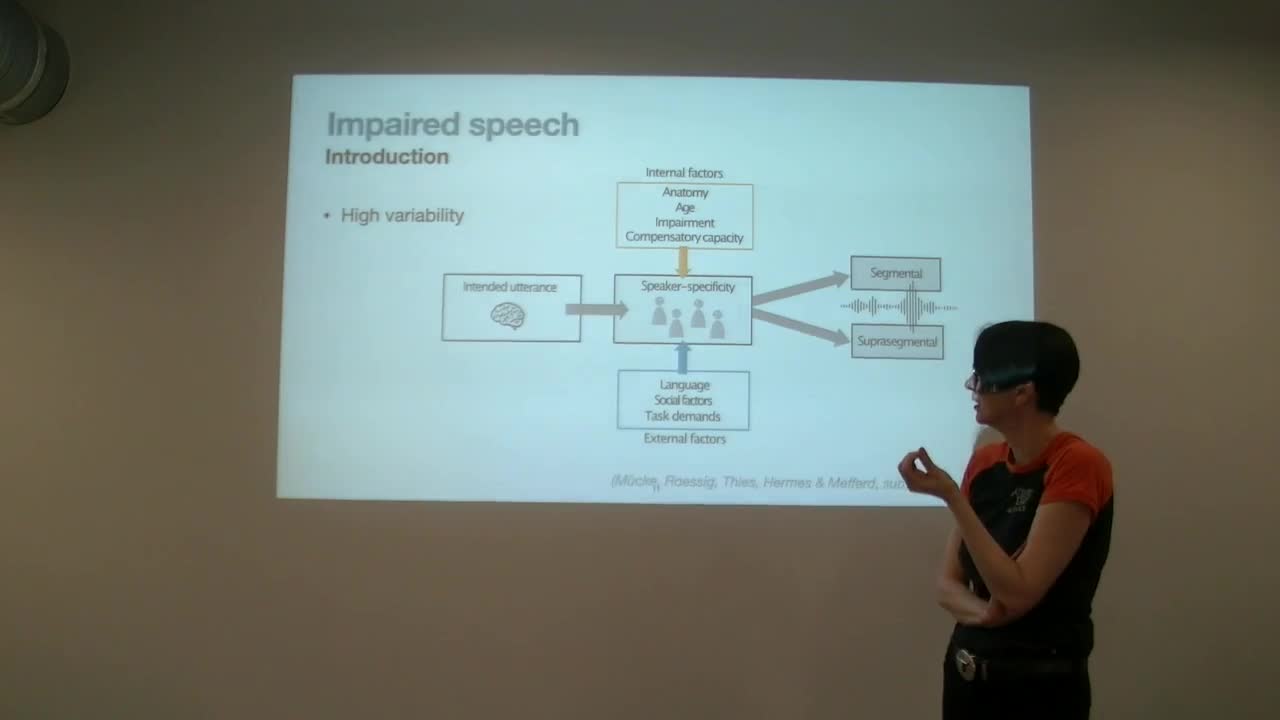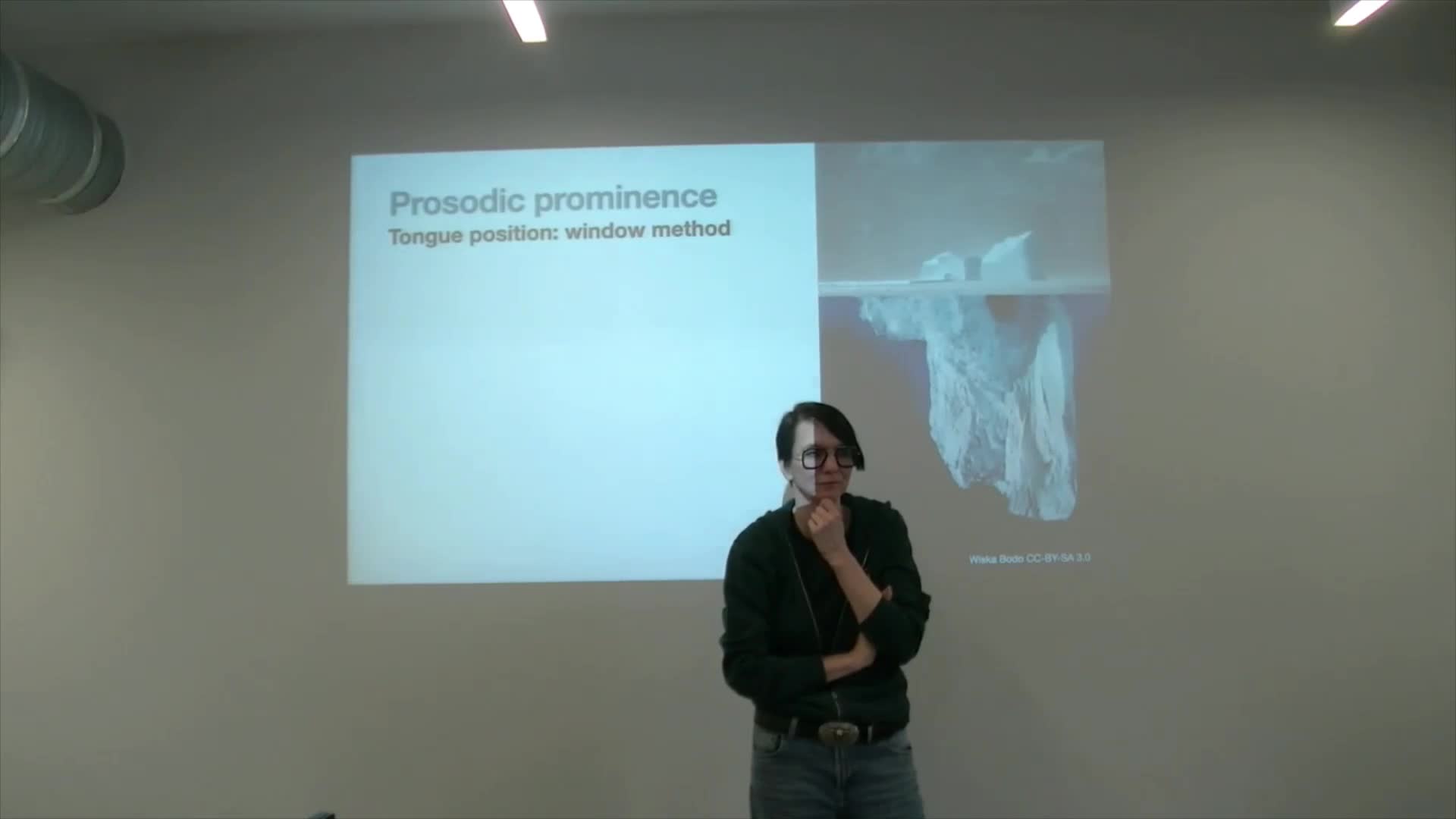Notice
Doris Mücke - Speech dynamics: Basics and challenges of speech dynamics
- document 1 document 2 document 3
- niveau 1 niveau 2 niveau 3
Descriptif
The dynamical systems theory has been applied to the coordination of e.g., limb movements (finger, arm, legs) and has been extended to linguistic theory (Haken et al. 1985). An important component of dynamical systems is the concept of point attractors, which are stable states in the continuous phase space the system travels towards. I will showcase how these attractors help to understand the variability in speech output and its relation to linguistic functions, e.g., when investigating sound change, phonological alternations or prosodic prominence on the segmental and intonational tiers (Browman & Goldstein 1986; Gafos & Benus 2006; Roessig & Mücke 2019).
Intervention / Responsable scientifique
Thème
Avec les mêmes intervenants et intervenantes
-
Doris Mücke - Speech dynamics: Modelling unpredictable patterns in speech production
MückeDorisSpeech dynamics: Mapping phonetic surface to phonological forms in neurotypical and atypical speech (Doris Mücke) 4. Modelling unpredictable patterns in speech production
-
Doris Mücke - Speech dynamics: Applying speech dynamics to impaired speech and aging
MückeDorisSpeech dynamics: Mapping phonetic surface to phonological forms in neurotypical and atypical speech (Doris Mücke) 3. Applying speech dynamics to impaired speech and aging
-
Doris Mücke - Speech dynamics: Dealing with the complexity of prosodic systems
MückeDorisSpeech dynamics: Mapping phonetic surface to phonological forms in neurotypical and atypical speech (Doris Mücke) 2. Dealing with the complexity of prosodic systems




